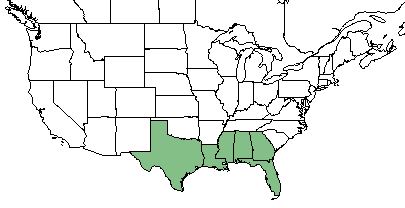Difference between revisions of "Agalinis pulchella"
(→Taxonomic Notes) |
(→Description) |
||
| Line 22: | Line 22: | ||
Synonym: ''Gerardia pulcherrima''<ref name="USDA"/><ref name="Weakley 2015"/> | Synonym: ''Gerardia pulcherrima''<ref name="USDA"/><ref name="Weakley 2015"/> | ||
| − | ==Description== | + | ==Description== <!-- Basic life history facts such as annual/perrenial, monoecious/dioecious, root morphology, seed type, etc. --> |
| − | <!-- Basic life history facts such as annual/perrenial, monoecious/dioecious, root morphology, seed type, etc. --> | + | ''Agalinis pulchella'' is a dioecious annual that grows as a forb/herb.<ref name="USDA"/> |
| + | |||
==Distribution== | ==Distribution== | ||
==Ecology== | ==Ecology== | ||
Revision as of 17:09, 26 January 2018
| Agalinis pulchella | |
|---|---|
| Scientific classification | |
| Kingdom: | Plantae |
| Division: | Magnoliophyta - Flowering plants |
| Class: | Magnoliopsida - Dicots |
| Order: | Scrophulariales |
| Family: | Scrophulariaceae |
| Genus: | Agalinis |
| Species: | A. pulchella |
| Binomial name | |
| Agalinis pulchella Pennell | |

| |
| Natural range of Agalinis pulchella from USDA NRCS Plants Database. | |
Common name: St. Mark's false foxglove[1]
Contents
Taxonomic Notes
Synonym: Gerardia pulcherrima[1][2]
Description
Agalinis pulchella is a dioecious annual that grows as a forb/herb.[1]
Distribution
Ecology
Habitat
A. pulchella is found in pine savannas and sandhills of the southeast.[2]